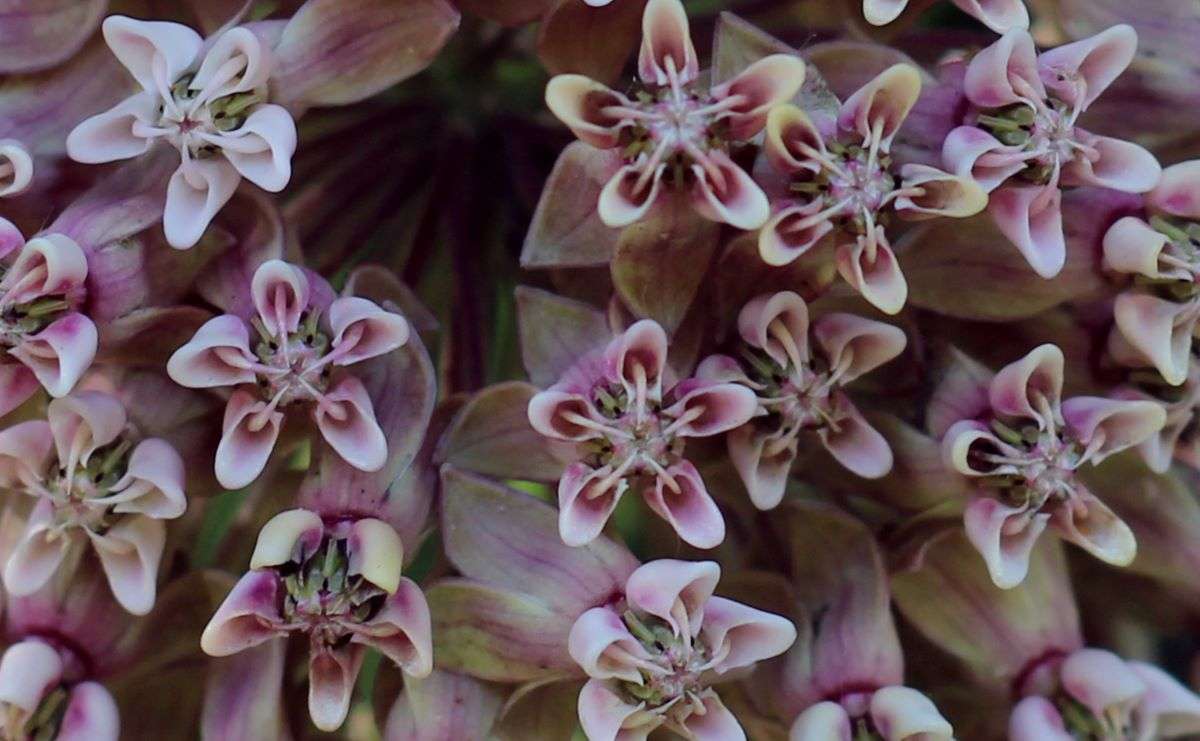Out in the Woods
- August 2nd 2024
- Out in the Woods

Common milkweed in bloom
Photo:Courtney Celley, USFWS
Milkweed: Food Fit for a Monarch
By Kevin McKeon, Maine Master Naturalist
Our common milkweed’s scientific name, Asclepias syriaca, refers to Asklepios, the Greek god of medicine, and to Syria from where it was mistakenly thought to have originated. Found primarily in North America, it’s a hugely beneficial wildflower with over 100 species living in the United States, including three in Maine: butterfly, common, and swamp milkweeds. More than 450 insects feed on some portion of the plant, and since insects are a super food for wildlife, so is milkweed.
The flowers produce a lot of nectar that attracts bees, flies, ants, beetles, and of course, butterflies. We’re all familiar with the relationship our monarch butterfly has with its leaves and milky sap. These beauties lay their eggs exclusively on milkweed, and the caterpillars eat milkweed — only milkweed. Other common creatures we’ll also see on this plant are the colorful red milkweed beetle, with its black dots; the fuzzy tussock moth caterpillar with its stinging hairs that can cause a burning, itchy rash, and the large and small red and black milkweed bugs — yup, that’s their name — that feed on seeds and can cause a 90 percent loss of seeds.
Many insects that eat milkweed have developed orange-red and black colors, and here’s why. Milkweed contains various levels of steroids called cardiac glycosides that cause the plants to be toxic to most insects and animals. For some insects, the steroids become a defense: Monarch caterpillars feed on the leaves, ingesting and storing the plant’s toxins. This gives both caterpillars and butterflies a very bad taste, making them unpalatable to the birds and small rodents that want to eat them. Monarchs are one such insect, and birds have learned to leave both the butterflies and caterpillars alone.
The orange-red and black colorization of the bugs is called aposematic, meaning the color advertises to other creatures that it might be a good idea to leave this bug alone. Because it eats milkweed, the bug will have a very bad taste and actually be toxic. Aposematic coloration also applies to our monarch. And a monarch butterfly lookalike, the viceroy, has adopted a survival technique called mimicry. Its coloration has evolved to mimic the monarch’s, thus fooling predators into thinking that it tastes bad too, but it doesn’t. (Full disclosure: I’ve never actually tried one!)
As with many toxic plants, milkweed has medicinal uses. The Native American Omaha called it “wah’tha” or “raw medicine,” a cure for skin conditions, stomach ailments, chest pains, and the common cold. They ate young shoots, flowers, and young green fruits of milkweed, whose taste compared to asparagus and broccoli. Early European settlers called milkweed “pleurisy root,” using it to treat lung discomfort. It was also used for wart removal. The U.S. government listed the root of butterfly milkweed as an official herbal remedy from 1820 to 1936.
The plant has had other uses, too. Preserved cloth from Native American farming life 1,000 years ago was found to have been made from yarn of milkweed and rabbit fur. A re-creation of the method used was recently done, led by Dakota tribal elders. Milkweed stems were harvested, then soaked in water for three weeks, allowing the fibers to more easily separate. Cottontail rabbit fur was then spun with the fibers to make yarn, which was used to make panels of cloth.
Life jackets used by the U.S. military got their buoyancy from the cottony seed fibers from the kapok tree supplied by Japan, but during World War II this supply was cut off. So flossy milkweed fibers were used as a substitute. Part of the war effort was a national campaign to encourage children to fill pillowcases with milkweed pods. The Soil Conservation Service at that time promoted a brochure: “School children of America! Help save your father’s, brothers’, and neighbors’ lives by collecting milkweed pods. Two bags save one life” summed up the main mission. The floss harvested from two bags of milkweed pods would fill one life jacket. Milkweed floss was also used to line flight suits. An estimated 11 million pounds was thus collected, mostly by kids and their pillowcases!






